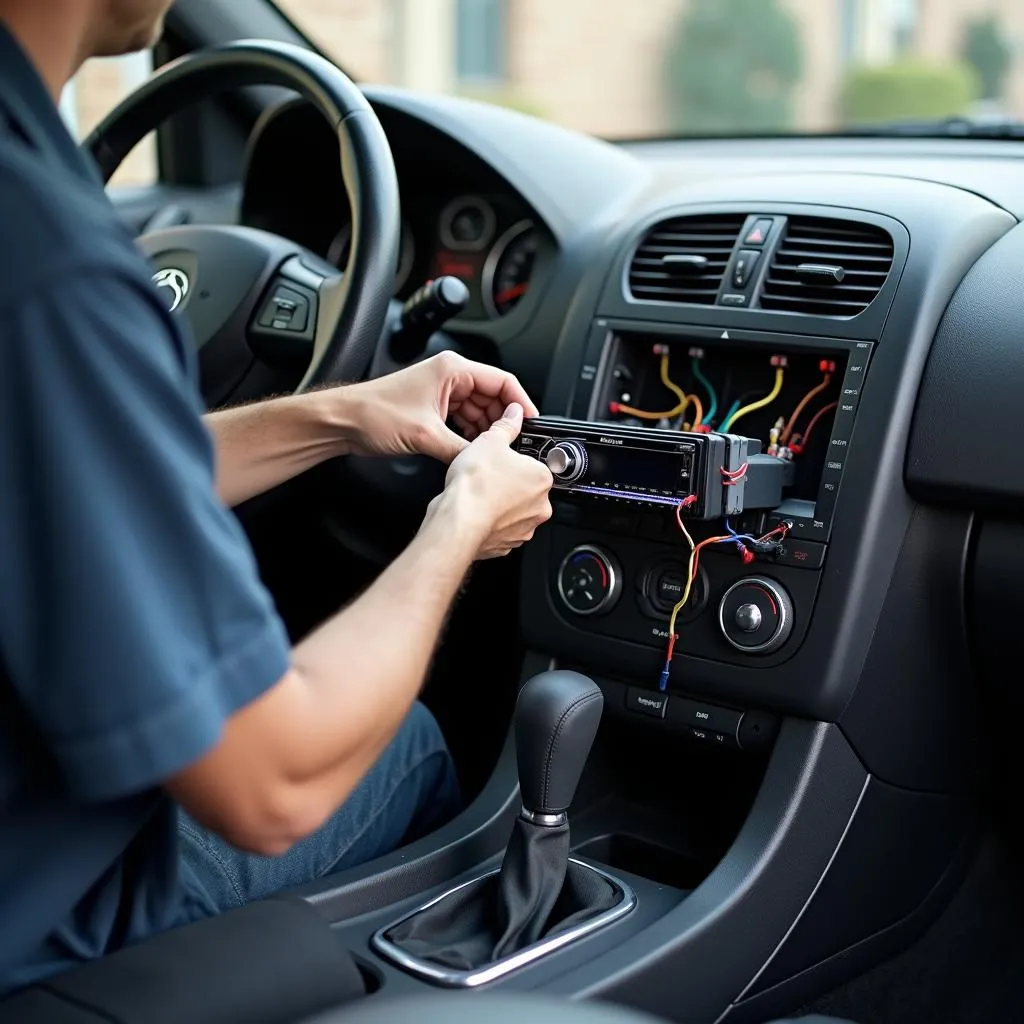The 2003 Kia Sedona brake warning light can be a frustrating issue, but understanding its causes and solutions can save you time and money. This article provides a comprehensive guide to troubleshooting and fixing the brake warning light on your 2003 Kia Sedona, covering everything from simple checks to more complex diagnostic procedures.
Understanding Your 2003 Kia Sedona Brake Warning Light
The brake warning light is a crucial safety feature, designed to alert you to potential problems within your braking system. It can illuminate for various reasons, ranging from a low brake fluid level to more serious issues like a malfunctioning ABS system. Ignoring this warning light can lead to dangerous driving conditions and potentially costly repairs.
Common Causes of a 2003 Kia Sedona Brake Warning Light
Several factors can trigger the brake warning light in a 2003 Kia Sedona. Here are some of the most common culprits:
- Low Brake Fluid: This is the most frequent cause. A leak in the brake lines or worn brake pads can deplete the fluid level, triggering the warning light.
- Worn Brake Pads: As brake pads wear down, they eventually reach a point where a sensor triggers the warning light, indicating it’s time for replacement.
- Faulty Brake Light Switch: The brake light switch activates the brake lights when you press the brake pedal. A malfunctioning switch can sometimes trigger the brake warning light as well.
- ABS Issues: Problems with the Anti-lock Braking System (ABS), such as a faulty sensor or control module, can illuminate the ABS and sometimes the brake warning light.
- Parking Brake Engaged: A simple but often overlooked reason. Ensure the parking brake is fully released.
Troubleshooting Your 2003 Kia Sedona Brake Warning Light
Here’s a step-by-step guide to help you diagnose the problem:
- Check the Parking Brake: Make sure the parking brake is completely disengaged.
- Inspect Brake Fluid Level: Locate the brake fluid reservoir under the hood and check the fluid level. If it’s low, add brake fluid that meets the manufacturer’s specifications.
- Inspect Brake Pads: Visually inspect the brake pads through the wheel spokes. If they appear thin or worn, it’s likely time for a replacement.
- Check Brake Light Switch: Test the brake light switch by pressing the brake pedal and observing the brake lights. If the brake lights don’t illuminate, the switch may be faulty.
When to Seek Professional Help for Your 2003 Kia Sedona Brake Warning Light
If you’ve performed these basic checks and the warning light persists, it’s time to consult a qualified mechanic. More complex issues like ABS problems require specialized diagnostic equipment and expertise.
“Ignoring a brake warning light can be incredibly risky,” says automotive expert Michael Stevenson. “It’s always better to err on the side of caution and have a professional diagnose the problem, especially when it involves your braking system.”
Remote Diagnostics and Software Solutions
Modern technology allows for remote diagnostics and software updates for certain vehicle systems. While not always applicable to a 2003 Kia Sedona’s brake warning light, it’s worth exploring if your mechanic offers such services. This can sometimes save you time and money by pinpointing issues without extensive physical inspection.
Conclusion: Addressing Your 2003 Kia Sedona Brake Warning Light
Addressing the brake warning light on your 2003 Kia Sedona promptly is essential for your safety. By following the troubleshooting steps outlined in this article, you can identify and potentially resolve the issue. Remember, if you encounter more complex problems, seeking professional help is crucial to ensure your vehicle’s braking system functions correctly. Don’t ignore the 2003 Kia Sedona brake warning light – address it today.
FAQ
- Can I drive my 2003 Kia Sedona with the brake warning light on? It’s highly discouraged. Driving with a brake warning light could be dangerous.
- How much does it cost to fix a brake warning light issue on a 2003 Kia Sedona? The cost varies depending on the cause. It can range from a few dollars for brake fluid to several hundred for more complex repairs.
- How often should I check my brake fluid level? Checking your brake fluid level at least once a month is a good practice.
- What type of brake fluid should I use in my 2003 Kia Sedona? Consult your owner’s manual for the recommended brake fluid type.
- Can worn brake pads cause a soft brake pedal? Yes, worn brake pads can lead to a soft or spongy brake pedal feel.
- Is it safe to add brake fluid myself? Yes, as long as you use the correct type of fluid and follow the instructions in your owner’s manual.
- How do I know if my ABS system is malfunctioning? Besides the warning light, you might experience unusual braking behavior, like the ABS pulsating excessively or not engaging at all.

